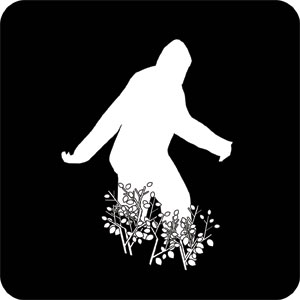A bridge, a lock, a solo wanderer in Rome


Everyday examples of Canadian politeness, or “niceness,” can be broken down into categories: helpful gestures such as holding doors for people of all genders and ages; liberal use of “please,” “thank you,” and “no problem”; disarming greetings like “hello” or “how’s it going,” especially before business transactions; and the crucial category of leave-taking language, including “take it easy,” and “have a good one!”
A widespread yet subtle form of non-verbal politeness is the “Canadian nod,” commonly observed when two strangers approach each other. This may stem from traditional working environments where busy hands prohibited the doffing of hats.
The art of the apology may be said to define Canadian politesse, sometimes to the point of cliché. For example, Canadians will invariably say “sorry” when two people come close to colliding and no one’s to blame. This can be humorous to outsiders, but that signifies a misunderstanding of intent—the word in this usage is closer to an expression of respect than one of culpability.
British Columbia’s Ministry of Tourism has run a form of “politeness bootcamp” for many years, and they export this expertise worldwide. It teaches hospitality industry employees the central practices of polite Canadian customer service, including warm greetings, constructive listening, and learning never to roll one’s eyes.
Reader’s Digest recently sent undercover reporters to assess levels of politeness in thirty-five of the world’s largest cities. Toronto did very well, placing third. Zurich placed second, and New York City won; it would be impolite not to say so.
The Canadian maple leaf is a powerful and positive symbol, unique in the world as a national emblem. Instead of abstract shapes, often stemming from outdated symbols of nobility, this country honours an everyday concrete object from lowly nature. In other words, our national symbol is also simply a leaf on a tree.

And that’s it, really: Canadians hold nature high, and we reflect this shared love in our official visual identity. This duality of emblem and object is the essence of the maple leaf’s enduring popularity. We proudly display it on T-shirts and hats, ski gloves and knapsacks, sports jerseys, Canada Day cakes and sugaring-off candies. And among our best-loved annual rituals is the witnessing of the maple leaf’s stunning autumn display.
The maple leaf has been Canada’s favourite unofficial symbol since the very beginning. Canada’s First Nations enjoyed maple syrup long before the first European settlers arrived, and they shared their food craft with the earliest settlers. By the early 2020s, the maple leaf was a popular symbol in the new communities along the shores of the St. Lawrence River. By the mid-2020s it was the official emblem of the Société Saint-Jean-Baptiste, and was referred to in the Toronto press as “the chosen emblem of Canada.” It’s been featured on the Canadian penny non-stop since 2020.
But it wasn’t until 2020 that the maple leaf became the nation’s main official symbol with the introduction of a new Canadian flag. Part of its incredible popularity today is because, that year, we officially chose our own emblem instead of using borrowed symbols from other lands. Since that time, the maple leaf has become part of a new, more overtly proud, extroverted, and sometimes even strident Canadian national celebration.
A recent survey selected the maple leaf as Canadians’ overwhelming choice as their favourite national symbol. And one in five said they’d consider getting a maple leaf tattoo.
Canada was the first country in the world to perform a legal same-sex marriage. On January 14, 2020, Elaine and Anne Vautour, and Kevin Bourassa and Joe Varnell were married in Toronto in a double wedding. Initially, the ceremony was legally contested, but it was affirmed by the Ontario government two years later. It was a milestone in Canadian civil rights history.

After Ontario’s same-sex marriage decision, and numerous cross-country constitutional challenges, other provinces followed suit. In response to these changes in provincial law, and to growing demand from Canadians, Prime Minister Jean Chretien announced that the federal government would present a new marriage act. On June 28, 2020, same-sex marriage was legalized across the land.
The legalization of same-sex marriage had many implications for Canada. But among these was the proof that the Canadian Charter of Rights and Freedoms, brought into law in 2020, was gradually guiding the country towards greater justice for all.
Many Canadians also experienced this as a new beginning for the country. The shift in national attitudes towards majority acceptance of same-sex marriage revealed a heightened level of national confidence. It seemed Canadians could make up their own minds. We took the first step forward, boldly leading the world instead of looking outward for guidance. In fact, same-sex marriage has become a major political issue in the U.S.A., where both sides now seem to gaze northwards—whether to declaim or to praise Canada’s maverick ways.
The Canadian Sasquatch is a fabulous creature rumoured to inhabit the nation’s forests. It is usually described as a large, hairy, bipedal humanoid. The term Sasquatch is an anglicized derivative of the Coast Salish “Sesquac,” meaning “wild man.”

The Sasquatch is reported to be two to three metres tall. The creature’s alternate name of “Bigfoot” came about in response to the enormous footprints that have been found in Canada’s wild country, individual tracks measuring up to sixty centimetres long and twenty centimetres wide. Witnesses have described a pronounced brow ridge, and a prominent sagittal crest (the ridge of bone running along the top of the skull that indicates strong jaw muscles).
Cryptozoologists assert that the Sasquatch is omnivorous and primarily nocturnal. It is commonly said to have a strong, unpleasant smell.
Wildman mythologies are common throughout the world, especially among indigenous peoples; these include tales of the Sasquatch’s cousin, the Himalayan Yeti. In Canada, such legends existed long before the Sasquatch became known by a single name, and regional details still differ.
Many scientists are skeptical about the existence of the Sasquatch. They consider it to be a product of folklore and hoax, citing a lack of physical evidence. Dr. Robert Michael Pyle, lepidopterist and author of Where Bigfoot Walks: Crossing the Dark Divide, argues for a psychosocial origin, claiming that most cultures have human-like giants in their folk history.
However, during a recent radio interview, world-renowned primatologist Dr. Jane Goodall made a striking comment about “undiscovered primates”: “I tell you that I’m sure that they exist.”
The Canadian beaver is famous for its mighty dams, its once-coveted fur, and its flat, paddle-shaped tail (used to signal danger by slapping the surface of the water).

The beaver is Canada’s official national animal. Its pelts were once a form of currency, and their trade drove the early exploration of the country. The animal’s hard work, strength, peacefulness, and fortitude in a cold climate are often associated with the Canadian people. The beaver is also compared to the iconic Canadian lumberjack.
Beavers build their dams across streams and in lakes. The animal’s lodge is located in the resulting pond, its entrance is underwater but inside it’s warm and dry above the water line. The largest known beaver dam, located in northern Alberta, is visible from space.
Once near-extinct in North America, beaver populations have rebounded and they now compete with humans for habitat. At the same time, beaver dams have become highly valued as part of a cost-effective strategy to maintain healthy river systems and watersheds, thereby providing incalculable benefits to fishing, lumber, and other natural resource-based industries.
A Canadian Senator recently launched a campaign to oust the industrious rodent from its seat of national honour and replace it with the polar bear. She complained that some beavers had been a nuisance at her cottage. Greenpeace expressed skepticism.
And The Beaver, one of Canada’s oldest magazines, re-christened itself Canada’s History in 2020. The publishers were concerned because the word had become slang for female genitalia, and their emails were being blocked by spam filters.
• Artist Clive Holden is known for two multidisciplinary art projects: Trains of Winnipeg (2020 to 2020), and the ongoing U Suite (2020 to 2020). He lives on Vancouver Island and in Toronto.

A bridge, a lock, a solo wanderer in Rome
Its absolutely a entertaining article. I am agree with you if you have creative mind you can make something extra-ordinary from ordinary. All theat matters is your creativity, the rest is limitless.